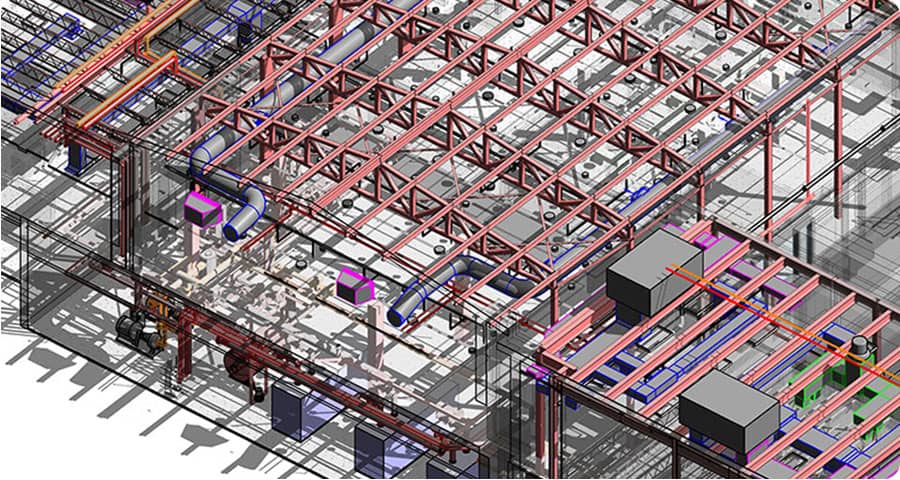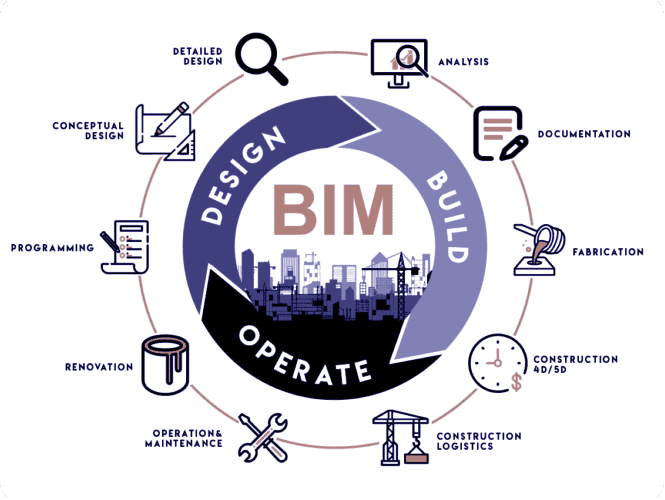
Power of 3D BIM Modelling Services in BIM
Introduction
In the ever-evolving landscape of construction and design, 3D BIM modelling services have emerged as a game-changer. This article aims to delve into the intricacies of this technology, providing insights into its applications, benefits, and real-world success stories that are reshaping the industry.
The Essence of 3D BIM Modelling Services
At the heart of 3D Building Information Modelling (BIM) lies a revolutionary approach to project planning and execution. This section will unravel the fundamental concepts, showcasing how it transcends traditional planning methods and elevates project outcomes.
Building Information Modelling (BIM) is a digital representation of the physical and functional characteristics of a building or infrastructure. Unlike conventional 2D blueprints, 3D BIM modelling services provide a three-dimensional, intelligent model that contains not only the geometry of the structure but also valuable data related to materials, components, and systems.
Applications of 3D BIM Modelling Services:
Architectural Design:
Architects can leverage 3D BIM modelling services to bring their designs to life in a virtual environment. This not only aids in creating visually stunning presentations for clients but also allows for a comprehensive exploration of design alternatives before finalizing the blueprint.
Structural Engineering:
Structural engineers use 3D BIM models to analyze the structural integrity of a building. This includes assessing load-bearing capacities, stress points, and potential vulnerabilities. The ability to simulate and analyze in a digital environment enhances the accuracy of structural assessments.
Construction Planning:
Contractors benefit from 3D BIM modelling during the construction planning phase. The detailed model provides insights into the sequencing of construction activities, resource allocation, and overall project scheduling. This results in a more organized and streamlined construction process.
Facility Management:
Beyond the construction phase, 3D BIM models continue to deliver value during the lifecycle of the building. Facility managers can access a wealth of information embedded in the model, aiding in maintenance, renovations, and future expansions. This contributes to long-term cost savings and operational efficiency.
The Transformative Impact on the Construction Landscape:
Time and Cost Savings:
The efficiency gained through 3D BIM modelling services translates into significant time and cost savings. By identifying and resolving issues in the virtual environment, the need for on-site modifications is reduced, minimizing delays and associated expenses.
Increased Accuracy and Precision:
The accuracy of 3D BIM models ensures that construction projects are executed with a high level of precision. This not only improves the quality of the final product but also reduces the likelihood of rework, saving both time and resources.
Sustainability Integration:
As sustainability becomes a central concern in construction, 3D BIM modelling services enable the integration of green building practices. Designers can analyze the environmental impact of materials and construction methods, making informed decisions that contribute to eco-friendly and energy-efficient structures.
Enhanced Risk Management:
The ability to detect and resolve clashes, simulate construction sequences, and analyze structural integrity in the virtual environment significantly reduces the risks associated with construction projects. This proactive approach enhances overall project management and minimizes unforeseen challenges.
Frequently Asked Questions (FAQs)
What is the primary purpose of 3D BIM modelling?
3D BIM modelling serves as a comprehensive tool for project planning and execution, offering enhanced accuracy and collaboration.
How does it benefit architectural design?
Architectural design benefits from 3D BIM modelling through improved visualization, error detection, and efficient collaboration.
Are LSI keywords essential for SEO in 3D BIM modelling content?
Yes, LSI keywords play a crucial role in optimizing content for search engines, ensuring better visibility.
Can 3D BIM modelling be applied to small-scale projects?
Absolutely, 3D BIM modelling is scalable and can be adapted to projects of varying sizes and complexities.
How does it improve communication in construction projects?
3D BIM modelling enhances communication by providing a visual representation of the project, reducing misunderstandings and errors.
Conclusion
In conclusion, the impact of 3D BIM modelling services is undeniably transformative. From revolutionizing architectural design to streamlining collaboration among subcontractors, its benefits are far-reaching. As we look ahead to the future, it is evident that 3D BIM modelling will continue to shape the construction and design landscape, ushering in a new era of innovation and efficiency.

